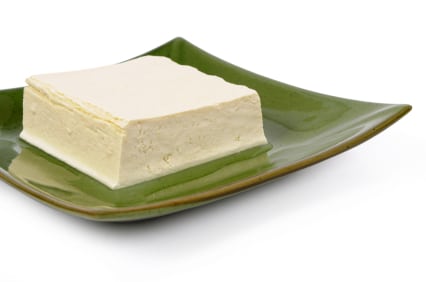
An individual protein is made up of building blocks called amino acids. Some of these amino acids are “essential”, because they’re required for health, yet the body can’t make them. Thus, they have to come from diet. To make things tricky, not all protein foods contain all of these essential amino acids. The ones that don’t are called incomplete proteins, while ones that have all of the required amino acids are complete proteins. Why is the issue of complete vs. incomplete proteins an important one?
Complete vs. Incomplete Proteins is an Important Issue for Vegetarians and Vegans
Animal-based protein sources such as meat, poultry, fish and dairy products are complete proteins. This means when you eat these foods, you get all of the essential amino acids your body needs for health. On the other hand, if you’re a vegetarian or vegan, getting all of your essential amino acids becomes trickier.
Vegetarians and vegans get much of their protein from non-animal sources such as legumes, nuts, grains, vegetables, and soy. The problem is, with the exception of soy, these sources of protein are all incomplete protein sources, meaning they don’t contain all of the amino acids you need to stay healthy. Soy is a complete source of all essential amino acids, which is why tofu and other soy-based foods are so popular among vegetarians and vegans. Vegetarians who eat dairy have the benefit of being able to get a complete source of protein from dairy products and eggs, while vegans do not.
How to Get All of the Amino Acids You Need if You’re Vegan
If you’re vegan, you can eat soy-based foods such as tofu, tempeh, and soymilk since their complete sources of protein. But you can also combine two different types of plant-based protein to get all of the essential amino acids you need. For example, whole-grains such as brown rice lack the essential amino acid lysine, but you can supply this missing amino acid by eating brown rice with beans or lentils. Beans and lentils are rich in lysine but lack methionine, another essential amino acid. This is why vegetarians often combine beans and rice into a single dish.
The good news is you don’t have to combine two incomplete protein foods at a single meal to make a complete protein. As long as you eat the food containing the missing amino acids within 24 hours of eating another incomplete protein, you’ll get the benefits of a complete protein that contains all of the amino acids you need to stay healthy.
Complete and Incomplete Proteins: Use Them to Stay Healthy
If you’re vegetarian, and particularly if you’re vegan, it takes a little planning to make sure you’re getting all of the amino acids you need for health, but you can get the protein your body needs by eating plant-based proteins that complement one another. It’s important for good health.
References:
Fit and Well: Core Concepts and Labs in Physical Fitness and Wellness. Fourth Edition. 2001.
Related Articles By Cathe:
Protein Quality: Not All Proteins Are Created Equal
2 Factors That Determine the Quality of a Protein
Can Eating a Higher Protein Diet Reduce the Risk of an Exercise-Related Injury?
Is Plant Protein as Satiating as Animal Protein?
Can You Build Muscle on a Plant-Based Diet?
Pros and Cons of Eating Plant-Based Protein
An Exceptional Source of Muscle-Building Protein You’re Probably Not Eating
Branched-Chain Amino Acid Supplements: Why You Don’t Need Them

